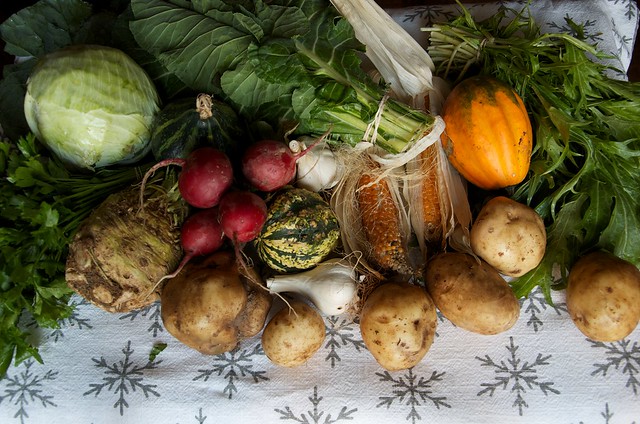I live in Connecticut. I’m surrounded by beautiful farms and orchards, which offer local meats, vegetables, eggs and more. Our state is also dotted with small vegetable stands pushing the local movement even further. Pretty much every new restaurant is a “farm to fork” establishment, while every old restaurant reinvents their meal to also support local agriculture. This movement makes it easy to feel good about supporting local restaurants, which are serving not only delicious food…but local food too.

Then came an article published in the New York Times last August titled, Don’t Let your Children Grow Up to be Farmers, which shined a light on the farm to table movement that we believe we are supporting as we sit to dine on local food in neighborhood restaurants. The article brings to light the economic pressures on our local, small farmers who are often working several jobs to make ends meet since their small farm isn’t enough to sustain them when the many costs to maintain it are considered. Suddenly, it didn’t feel as “good” to support a local restaurant just because it offered a plate with local tomatoes; suddenly it felt more like a movement that benefitted the restaurant more than the farmer.
This article builds upon a call to action that acclaimed chef and author Dan Barber unveiled in his new book (released earlier this year) titled, The Third Plate: Field Notes for the Future of Food. In it, Barber challenges us to go beyond just buying local vegetables, meat and dairy to understanding the many connections that bring those items to market. Inspired by a quote from naturalist John Muir, “when we try to pick out anything by itself, we find it hitched to everything else in the Universe,” Barber wants us to focus on the many factors that are “hitched” to that crop, rather than just considering the crop itself.
In order for small farms to be sustained, we need to view the farm as a whole and understand how to use and enjoy every piece of it. Small farmers know that in order to grow without chemicals; to allow land to flourish and produce year after year, that crops need to be rotated. Unless we learn to appreciate all of these crops for their unique role in supporting the land, we are not truly supporting a famer…we are essentially a fair weather friend that only embraces the, say heirloom tomatoes, in the summer, while leaving that farmers land unsupported the other months of the year. The challenge to the “farm to fork” restaurants is to create innovative menus that embrace the changing crop; the challenge to us is to seek these items in our local food stores and indoor/outdoor farmers markets throughout the year.
As we embrace the autumn harvest and enjoy these last long days of sunlight, I encourage you to consider how you will support your local agriculture and buy seasonal vegetables. Living in the northeast as I do, this is a challenge, though not impossible. Something tells me that my local farmer will be happy to help.